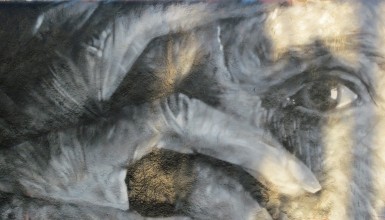Lady2Soothe Follow @OurVoicesEcho


It’s important to examine form as well as function when considering the media. There are 1,500 newspapers, 1,100 magazines, 9,000 radio stations, 1,500 TV stations, 2,400 publishers. Rupert Murdoch, Sumner Redstone and Arthur Ochs Sulzberger Jr. own the “Big Six” which equals 90% of all media, GE – NEWS CORP – DISNEY – VIACOM – TIME WARNER and CBS; these corporations control Agriculture, Oil, Chemical, and the Pharmaceutical by creating the expectance of War – all linked together through TV Programing, Movies, News Delivery Services, Commercials etc. by framing their agenda’s, manipulating any given circumstance, factual or implied into pre-formed perspectives with the intent to influence by indoctrinating the public to their way of thinking, framing ideas into easy steps starting from our earliest cartoon viewing, then continuing as we progress though life at each age or learning level, watching, reading, listening.
Regardless of the delivery system, media is the defining factor for economic consumption and consumer direction. We become subservient by the illusion and conditioning of peer pressure integrated by the ideology which is promoted over and over. People are programmed to emulate what they perceive as the norm; therefore we conform to media’s way of reasoning by indirect guidance, coaching, shepherding and brainwashing into the culture of war.
Black vs. White: is the RACE War – Organic vs. GMO/Chemical: is the Pesticide War – Fracking vs. Conventional Drilling: is the Oil War – Prescription Drugs vs. Alternative Medicines (Pharmaceuticals): is the War on Sickness – Men vs. Women: is the War of the Sexes – NRA vs. Gun Control: is the 2nd Amendment War – Christianity vs. Atheists/Agnostics/Muslim etc.: is the War on Religion. It takes media Literacy to comprehend and decipher how each of these issues affects us as men or women with our distinctive ethnic backgrounds. The principals of these *Wars* are established by invisible borders to cultivate and gain control of the public sector.
Gender defining by media is the ideas, characteristic and perception of how a product is marketed….. Masculine equals strong, feminine equals weak; transgender may consolidate both masculine and feminine. Accordingly media is geared to the gender targeted as a prospective sale – clothing, sports gear, vitamin supplements, building materials, kitchen appliances, military force, environmental issues, vaccines, and how these products impact personal and political ideologies and lifestyles.
The intersectionality of men and race as in Black Lives Matter is trivialized by those insisting All Lives Matter when in fact historically Black men are 21 times more likely to be killed by police than White men. The disproportionate rate of incarceration is 1 in every 15 Black men to 1 in every 106 White men. Intersectionality to women and domestic violence is countered with “there is domestic violence against men too” minimizing assaults against women, yet 29% of women in comparison to 10% of men are victims.
There is ONLY one RACE, the HUMAN RACE, yet typically people mistake genetics, DNA, nationalities and ethnicity equating skin color, hair texture, eye shape, facial contours, body structure, athletic ability, speech patterns, socioeconomic status, male and female as a means to categorize society. It’s important to analyze and evaluate how each in, and of themselves collectively influence one another.






